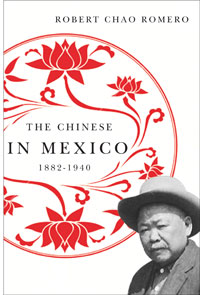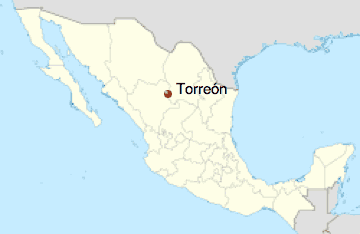 The first immigrants from Mexico weren’t Mexican; they were illegal Chinese immigrants.
The first immigrants from Mexico weren’t Mexican; they were illegal Chinese immigrants.
I know. Me sorprenden tambien.
That’s according to the meticulous research by Robert Chao Romero, an author and assistant professor of Chicana and Chicano Studies in UCLA. Born in East LA, Romero is a Chino/Mexicano: his father is Mexican and his mother is Chinese. After getting a J.D. from UC Berkeley, he realized his passions lay not in law, but in his heritage. That’s when he entered academia and wrote The Chinese in Mexico, 1882-1940.
Back in college, I remember meeting a Chinese guy with a thick Brazilian accent. I was shocked. That’s when I learned about the Chinese immigrants in Brazil, and Asian populations outside of the United States in general. Yeah, I know — very Ignorant American of me.
I was also ignorant of the massacre of Chinese Mexicans in Torreon in 1911. Most of the modern world is too, perhaps, if Google Searches are any indication. Most of the entries are references to Romero’s book, or of other more recent massacres in Torreon’s history.
His book is a thoroughly researched tome of Chinese Mexican history. It’s the only book on this topic as well. (Zachary Mexico’s book China Underground is not about Chinese Mexican history; I know, I thought it might have been too.)
Since the Torreon Chinese Massacre of 1911 isn’t well-documented, I wanted to share this piece of history. If you’ve already read about it, rock on my brother.
Torreon is in Northern end of Mexico, in the state of Coahuila. When the Chinese Exclusion Act of 1882 was passed, about 60,000 Chinese immigrants traveled to Mexico for employment, or to gain illegal entry into the United States. That’s when they started to cross the border.
Of those that settled down in Mexico, a large contingent went to work on the country’s railroads. Many established a home at a railroad junction that later became the city of Torreon.
Just as there was a xenophobic reaction to Chinese immigrants in the U.S., a growing fervor of nationalism in Mexico led many revolutionaries to view foreigners as taking jobs away from them. Sounds familiar, huh?
On May 13, 1911, revolutionary general Pancho Villa led a strategic assault on Torreon. In addition to armed Federal troops, a faction of Villa’s army also attacked Chinese immigrants in what Romero calls, “the worst act of violence committed against any Chinese diasporic community of the Americas during the twentieth century.” Over 300 Chinese immigrants were slaughtered. Their homes and businesses were destroyed. The rest were spared when Villa saw what was happening and ordered his troops to stand down.
Chinese officials protested the unwarranted attack and demanded reparations. After the revolution, Francisco Madero came to power as the President of Mexico. He offered an indemnity of three million pesos to the Chinese community. However, a coup by Victoriano Huerta resulted in Madero’s death. The indemnity was never paid.
Despite this horrific tragedy, the Chinese in Mexico continued to thrive. “Despite the violence perpetuated against Chinese immigrants, they continued to persevere and have contributed to Mexico’s diversity,” Romero wrote. “It is a great testament to their courage and will to survive in spite of great adversity and prejudice against them.”
Today, there are two major Chinese communities in Mexico: La Chinesca in Mexicali and Barrio Chino in Mexico City. Though both are small compared to Chinatowns elsewhere in the world, (La Chinesca has about 5,000 residents of Chinese origin and Barrio Chino has about 3,000), the blended Chinese Mexican heritage is thriving. Chinese restaurants offering hamburgers, chow mein, green tea and shark-fin tacos are not uncommon.
Hey, that sounds like SoCal. Welcome home, Romero.








